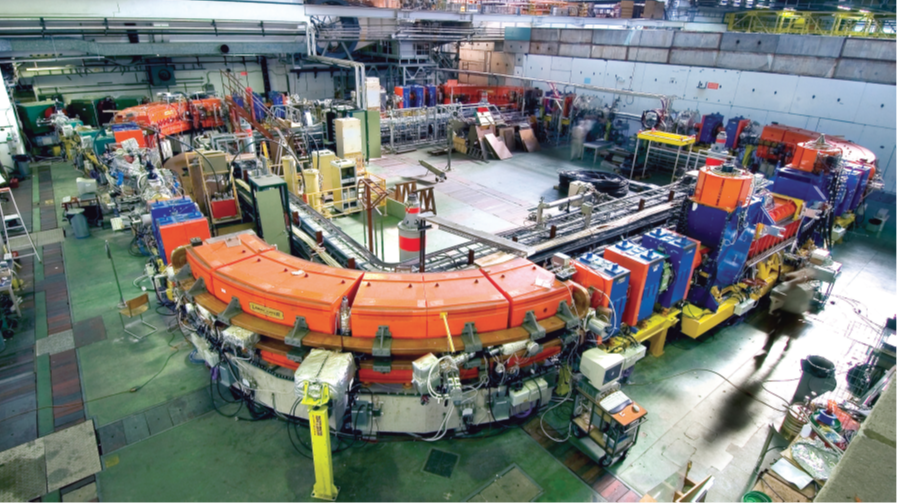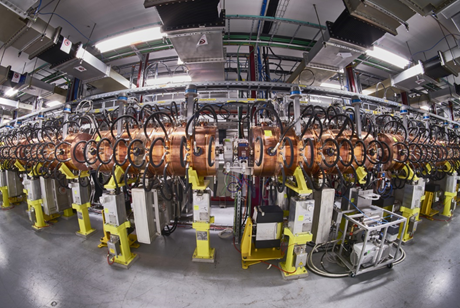SM18:
The SM18 facility is a world leading magnet test facility for testing magnets and instrumentation at low temperature (1.9 K up to 80 K) and up to high currents (20 kA). Due to its wide infrastructure and long expertise it is has unique capabilities to carry out tests for instrumentation and superconducting magnets in vertical or horizontal test benches, and magnetic measurements of all types on accelerator magnets.
LHCb:
The Large Hadron Collider Beauty experiment, LHCb has been set up to study the slight asymmetries between matter and antimatter using particles known as beauty quarks. Located in a vast cavern 100 m below the ground, every layer of LHCb is designed to identify and measure a different aspect of the particles flying out from the collision. Rather than spraying out in all directions, the beauty quarks formed by the colliding proton beams stay close to the line of the beam pipe. This is reflected in the design of the detector - LHCb stretches for 20 m, with its sub-detectors stacked behind each other like books on a shelf.
The ATLAS Experiment at CERN is one of the largest most complex scientific instruments ever constructed. It is designed to explore the inner universe, advancing our understanding of the basic building blocks and fundamental forces of nature. Five thousand physicists from about 180 institutions in 38 countries around the world participate in ATLAS. When the LHC is in operation, up to 600 million protons collide every second inside the detector. ATLAS Virtual Visits gives the public a unique opportunity to be part of this great scientific adventure. Using web-based video conferencing tools, participants talk with an ATLAS physicist, receive a tour of the control room, and get answers to their questions.
CCC:
The CERN Control Centre, where particle beams from the whole accelerator complex are controlled 24/7.

AD:
The Antiproton Decelerator is a unique machine providing low-energy antiprotons for studies of antimatter, in particular for creating anti-atoms. Previously, ‘antiparticle factories’ at CERN or elsewhere consisted of a chain of accelerators, each performing one of the steps needed to provide antiparticles for experiments. Now the AD performs all the tasks alone, from producing the antiprotons to delivering them to the experiments.
Linac3/LEIR:
CERN’s heavy ions injector complex.

Linac4:
CERN’s 160 MeV H− linear accelerator which will replaceLinac2 as main injector of the CERN proton accelerator complex. Currently being commissioned and undergoing a reliability run, it will be connected to the PSB ring by 2020.

ISOLDE:
The on-line isotope mass separator ISOLDE is a facility dedicated to the production of a large variety of radioactive ion beams for many different experiments in the fields of nuclear and atomic physics, solid-state physics, materials science and life sciences.
CAST:
CERN Axion Solar Telescope is looking for a particle called axion, which should be coming from the Sun. Axions are hypothetical particles, neutral, practically stable, with very low mass and very weak interaction (similar to neutrino). They were introduced to solve the strong CP problem and they are candidates for the Dark Matter in the Universe. A de-commissioned LHC test magnet on a moving platform for solar tracking.

AMS:
AMS is a large acceptance and high precision magnetic spectrometer on the ISS (international space station). It is the only experiment in space using a superconducting magnet, allowing an unprecedented sensitive search for antimatter, dark matter and cosmic rays studies.

MICROCOSM:
Microcosm's exhibitions take visitors on a journey through CERN’s key installations. Follow the path of the particles from a bottle of Hydrogen, through the network of accelerators, on to collision inside vast experiments.
